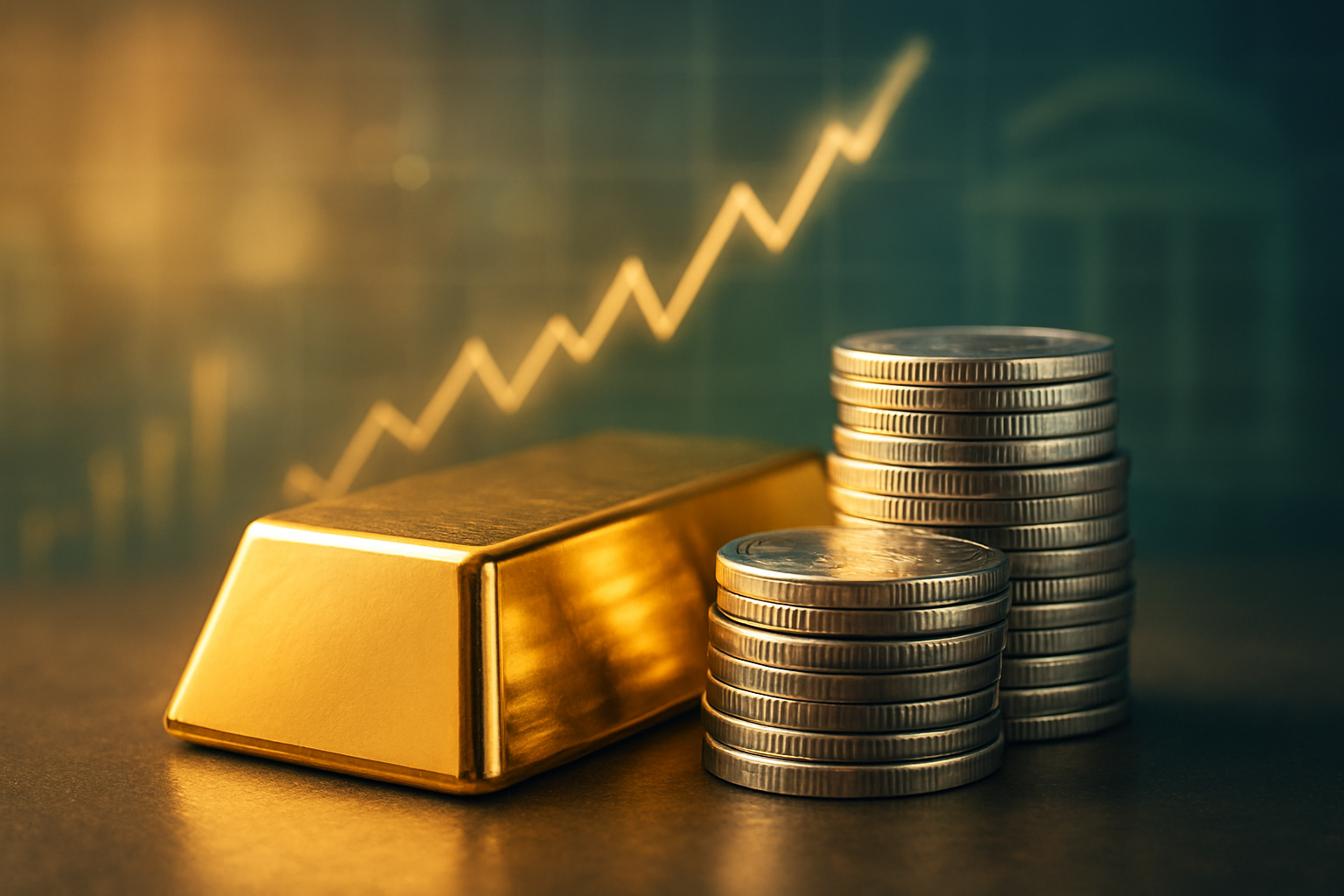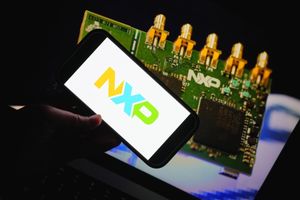
October 29, 2025 – The financial markets are buzzing today as gold prices have spectacularly rebounded above the $4,000 per ounce threshold, with silver also experiencing a significant and historic jump. This powerful surge in precious metals is largely attributed to overwhelming market speculation and growing certainty surrounding an imminent interest rate cut by the Federal Reserve. Investors are now closely scrutinizing whether this marks the beginning of a sustained "golden rally" for both gold and silver, signaling a potential shift in investment strategies amidst evolving economic landscapes.
The immediate implications are profound, with a clear bullish sentiment dominating the precious metals sector. Lower interest rates, a weaker U.S. dollar, and persistent geopolitical uncertainties are creating a potent cocktail for continued upward momentum. This rally reflects not just a flight to safety but also a strategic repositioning by investors anticipating a more accommodative monetary policy from the world's most influential central bank.
The Resurgence of Precious Metals: A Deep Dive into the Current Rally
The current precious metals rally, particularly on October 29, 2025, sees gold trading above $4,000 per ounce, specifically at $4,008.07 USD/t.oz, while silver has climbed to $48.36 USD/t.oz. This resurgence follows a period of notable volatility, especially for gold. Earlier in 2025, gold had already demonstrated exceptional strength, surging over 60% since the start of the year and hitting an all-time peak of approximately $4,398 per ounce on October 20. This rapid ascent was briefly interrupted by a sharp sell-off, which saw gold plummet over 6% in a single day—its largest daily drop in over a decade. However, aggressive value buying quickly drove its recent rebound, proving the metal's underlying resilience.
Silver, often referred to as "poor man's gold," has not only kept pace but has arguably outshone its yellow counterpart, posting over 70% gains year-to-date. The white metal surpassed the $50 per ounce mark on October 9, 2025, reaching a four-decade high of $51 and an even more impressive record high of $54.3775 per ounce in mid-October. Its current jump to $48.36 USD/t.oz underscores continued strong demand and tight supply in the market.
The primary catalyst for this robust rally is the widespread expectation that the Federal Reserve will implement a 25-basis-point interest rate cut at its October 2025 meeting, lowering the federal funds rate target to 3.75%–4.00%. This move follows a similar rate reduction in September 2025, and markets are already pricing in another potential cut in December. The Fed's dovish pivot is reportedly influenced by a weakening job market and persistent, albeit slightly easing, inflationary pressures. This policy shift reduces the opportunity cost of holding non-yielding assets like gold and silver, making them significantly more attractive to investors seeking safe havens and inflation hedges.
Corporate Fortunes: Winners and Losers in the Precious Metals Boom
The soaring prices of gold and silver are set to create clear winners and losers across the financial landscape, particularly impacting public companies involved in mining, refining, and investment.
Among the most direct beneficiaries are major gold and silver mining companies. Companies like Barrick Gold (NYSE: GOLD) and Newmont (NYSE: NEM), two of the world's largest gold producers, are poised for increased revenues and potentially higher profit margins as the value of their primary product escalates. Similarly, silver-focused miners such as Wheaton Precious Metals (NYSE: WPM), a leading precious metals streaming company, and Pan American Silver (NYSE: PAAS) will see a substantial boost to their financial performance. These companies often operate with fixed or relatively stable production costs, meaning that a significant rise in commodity prices directly translates to enhanced profitability. Increased cash flows could enable these firms to invest in exploration, expand existing operations, or return capital to shareholders through dividends and buybacks.
Conversely, companies heavily reliant on a strong U.S. dollar or those with significant exposure to rising borrowing costs could face headwinds. While the overall sentiment is positive due to anticipated rate cuts, a rapidly weakening dollar could impact companies with large international operations if their foreign earnings translate into fewer dollars. Furthermore, in a scenario where the rally in precious metals is accompanied by broader inflationary pressures (even if moderate), some companies might face increased input costs, potentially squeezing margins in certain sectors. However, the current narrative of a Fed rate cut suggests a more supportive environment for equities generally, with precious metals offering an attractive alternative or hedge.
Investment vehicles such as precious metals ETFs, including SPDR Gold Shares (NYSEARCA: GLD) and iShares Silver Trust (NYSEARCA: SLV), are also seeing heightened investor interest and inflows. While some profit-taking has been observed recently, the underlying demand remains robust, driven by both institutional and retail investors seeking exposure to the rally. This increased demand benefits the asset managers behind these ETFs. The dual role of silver as both a monetary and industrial metal further bolsters its appeal; companies in the electronics and renewable energy sectors that utilize silver may face higher raw material costs, but the overall industrial demand for silver, particularly given its recent designation as a critical mineral by the U.S. government, is a strong bullish factor for silver producers.
Wider Significance: A Shift in the Global Economic Tapestry
The current surge in gold and silver prices, driven by expectations of a Federal Reserve rate cut, signifies more than just a momentary market fluctuation; it points to a broader recalibration of global economic sentiment and investment strategies. This event fits squarely into the trend of central banks worldwide grappling with persistent inflation, economic slowdowns, and the delicate balance of monetary policy. The anticipated Fed rate cut, following a similar reduction in September 2025, underscores a shift towards an accommodative stance, moving away from the aggressive tightening cycles of previous years.
Historically, there is a strong inverse correlation between interest rates and the appeal of non-yielding assets like gold. Lower interest rates diminish the opportunity cost of holding precious metals, making them more attractive compared to bonds or savings accounts. Concurrently, a dovish Fed stance typically leads to a weaker U.S. dollar. Since gold and silver are dollar-denominated, a weaker dollar makes these commodities cheaper for international buyers, further boosting demand and prices. The current environment, where US 10-year Treasury yields have slipped below 4%, further enhances the relative attractiveness of precious metals.
The ripple effects extend beyond direct investors. This "golden rally" could signal increasing investor apprehension about the long-term stability of traditional financial assets and a renewed preference for tangible, historically proven stores of value. This sentiment is amplified by persistent geopolitical tensions, including an ongoing US government shutdown and strained US-Russia relations, which fuel safe-haven demand. Conversely, any significant progress in US-China trade negotiations could temper some of this safe-haven inflow, leading to minor price corrections. Regulatory bodies will also be keenly observing the market dynamics, particularly the potential for increased volatility, especially in silver, which can exhibit price swings 1.7 times greater than gold.
Comparing this to historical precedents, the current situation echoes periods of significant monetary easing, such as after the 2008 financial crisis or during certain phases of quantitative easing. In those times, gold and silver experienced substantial multi-year rallies as investors sought refuge from currency debasement and economic uncertainty. The key difference now is the higher starting point for inflation and the unique industrial demand factors bolstering silver, particularly its critical role in green technologies. This blend of traditional monetary drivers and modern industrial applications suggests a potentially robust and sustained rally.
What Comes Next: Navigating the Path Ahead
Looking ahead, the outlook for gold and silver appears largely bullish in the short to medium term, albeit with an expectation of continued volatility. The primary driver will remain the Federal Reserve's monetary policy. If the Fed indeed proceeds with the anticipated October rate cut and signals further easing in December, the environment for precious metals will remain highly supportive. This could lead to a sustained rally, potentially pushing gold to new all-time highs and further cementing silver's position above its recent record levels.
In the short term, investors will be closely watching upcoming economic data, particularly inflation reports and employment figures, for any signs that might alter the Fed's dovish trajectory. Any hawkish surprises or stronger-than-expected economic indicators could lead to profit-taking and temporary pullbacks. However, the underlying demand, fueled by safe-haven appeal and central bank purchases, is expected to provide a strong floor for prices. Geopolitical developments, especially those affecting global stability or trade relations, will also play a crucial role, either intensifying safe-haven demand or providing temporary relief.
For public companies, strategic pivots may be necessary. Mining companies might accelerate exploration and development projects, hedging against future price fluctuations, and potentially increasing capital expenditures. Companies in the industrial sectors that rely on silver, such as those in solar energy or electronics, may need to factor in higher raw material costs into their budgeting and pricing strategies.
In the long term, the sustainability of this rally hinges on the broader global economic narrative. If inflation remains elevated despite rate cuts, or if geopolitical fragmentation continues, precious metals could continue to serve as a crucial hedge. Conversely, a significant global economic recovery coupled with a return to higher real interest rates could temper the rally. Potential scenarios include a gradual appreciation as the dollar weakens, sharp spikes during periods of heightened uncertainty, or a more consolidated upward trend if central banks globally adopt similarly accommodative policies. Market opportunities will emerge for investors willing to navigate the volatility, focusing on diversified portfolios that include precious metals as a core component.
Comprehensive Wrap-up: A New Dawn for Precious Metals
The recent rebound of gold prices above $4,000 and silver's significant jump, primarily driven by expectations of a Federal Reserve interest rate cut, marks a pivotal moment in the financial markets. The key takeaway is the strong correlation between anticipated Fed policy, a weakening U.S. dollar, and the renewed appeal of precious metals as both safe havens and inflation hedges. This event is not merely a transient spike but potentially the precursor to a sustained "golden rally," reflecting deeper shifts in investor confidence and global economic dynamics.
Moving forward, the market will undoubtedly remain sensitive to every pronouncement from the Federal Reserve and incoming economic data. The interplay between monetary policy, inflation, and geopolitical events will dictate the pace and trajectory of this rally. While the immediate outlook is bullish, investors should brace for continued volatility, especially given silver's historical tendency for larger price swings.
The lasting impact of this event could be a re-entrenchment of precious metals within diversified investment portfolios, serving as a critical ballast against economic uncertainty and currency fluctuations. For investors, the coming months will demand vigilance. Key indicators to watch include the Fed's actual rate decisions and forward guidance, the strength or weakness of the U.S. dollar, global inflation trends, and any significant developments in international relations. This period offers both opportunities and challenges, underscoring the enduring significance of gold and silver in a complex and evolving financial world.
This content is intended for informational purposes only and is not financial advice





